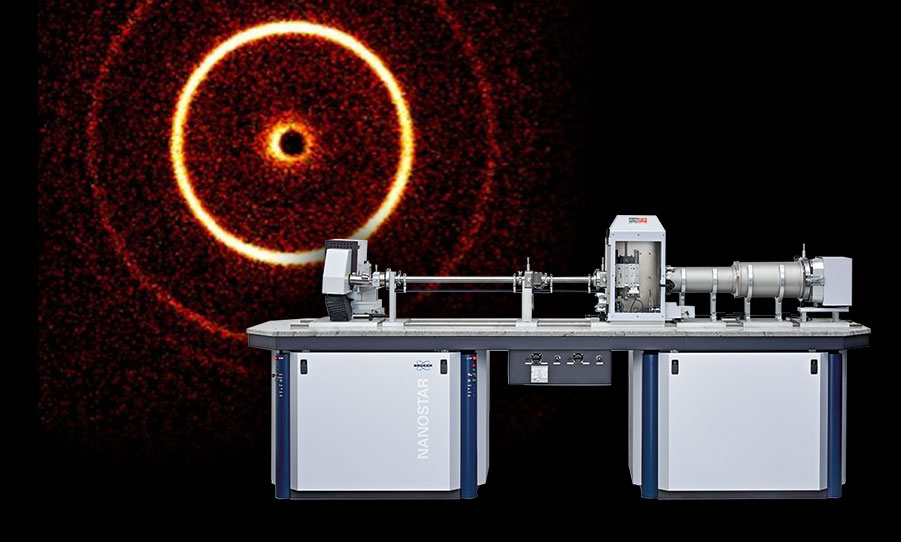For experimental flexibility.


The Bruker NANOSTAR is a modular SAXS, GISAXS and nanography instrument for characterising nanostructured surfaces and nanostructures from 1 nm to around 125 nm
For experimental flexibility.
Locate measurement points quickly.
Stable and intense.
Extra large sample chamber for multiple samples.
Measurement times are fast, with a mirror-conditioned pinhole collimation system, which produces a highly intense, parallel X-ray beam. An efficient circular beam shape is maintained. This eliminates background, so you can analyse weakly scattering samples as well as large structures.
NANOSTAR analyses pure sample properties, even in non-isotropic samples. The detector-to-sample distance can be adjusted from 11.5 mm to 1070 mm. This covers the entire range from SAXS to WAXS.
X-ray Nanography, also known as two-dimensional scanning Small Angle X-Ray Scattering, is a powerful technique for displaying and analysing the microscopic structure of specimens at the μm-scale. For example, nanography can be used ot highlight inhomogeneities such as different chemical compositions and varying density in a sample.
The sample is mounted on a motor-driven XY stage, so it can be scanned automatically with an X-ray beam. Each individual point within the nanograph represents the integral SAXS/WAXS intensity collected by the 2-D detector at that particular position. The intensity distribution is then displayed on a color-coded contour plot.
Measure the orientation and degree of ordering in polymeric fibers, composites and natural fibres. Even the internal structure of individual fibers can be analysed.
Analyse gels, sols, aggregation processes, charge or sterically stabilised sols and templating nanomaterials. SAXS provides data about size, size distribution, shape of particles, interparticle interaction and gelation / aggregation state.
In membranes or bones, e.g. cross-section, structure and interlamellar ordering is analysed. In proteins, DNA/RNA and other biomolecules, SAXS measures shape, structure, and aggregation state.
SAXS provides information on particle size and shape, composition, volume fraction and even interparticle correlations of precipitations in alloys, nano-crystals and nano-powders.
Acquire information about the size and shape of particles, inter-particle interaction, degree of crystallinity and phase transitions in liquid crystals.
Characterise the mesophases of bulk- or semi-crystalline polymers and block co-polymers. For polymer solutions and block copolymer micelles in solution, determine the osmotic compressibility, molecular mass and radius of gyration or correlation. Additional information on intermicellar interactions and on the structure and shape of the micelles can also be extracted.